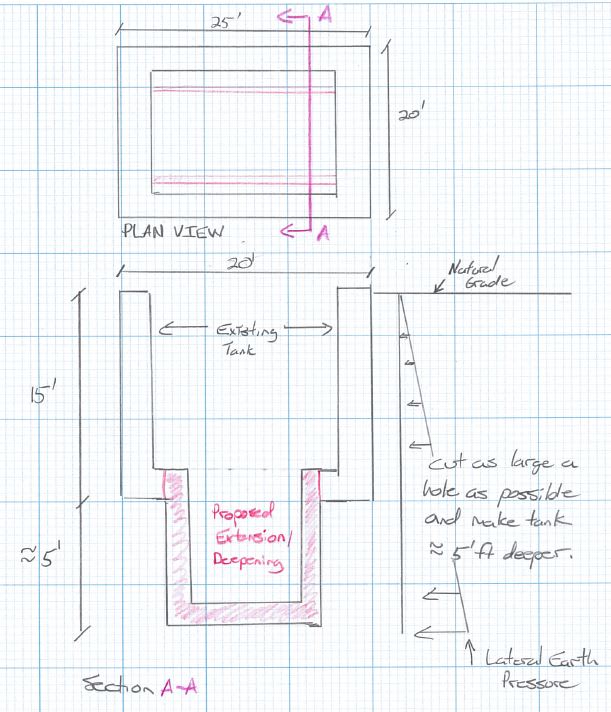JoelTXCive
Civil/Environmental
Can underground conventionally reinforced concrete rectangular tanks be 'deepened'.
The wastewater department has asked me if this is possible? I told them that I do not think it is. (or not without being crazy expensive.)
That was not the answer they were looking for.
I don't see how you connect the new section and get reinforcement developed, etc..
What do you think? See attached.

Thank you!
The wastewater department has asked me if this is possible? I told them that I do not think it is. (or not without being crazy expensive.)
That was not the answer they were looking for.
I don't see how you connect the new section and get reinforcement developed, etc..
What do you think? See attached.

Thank you!
